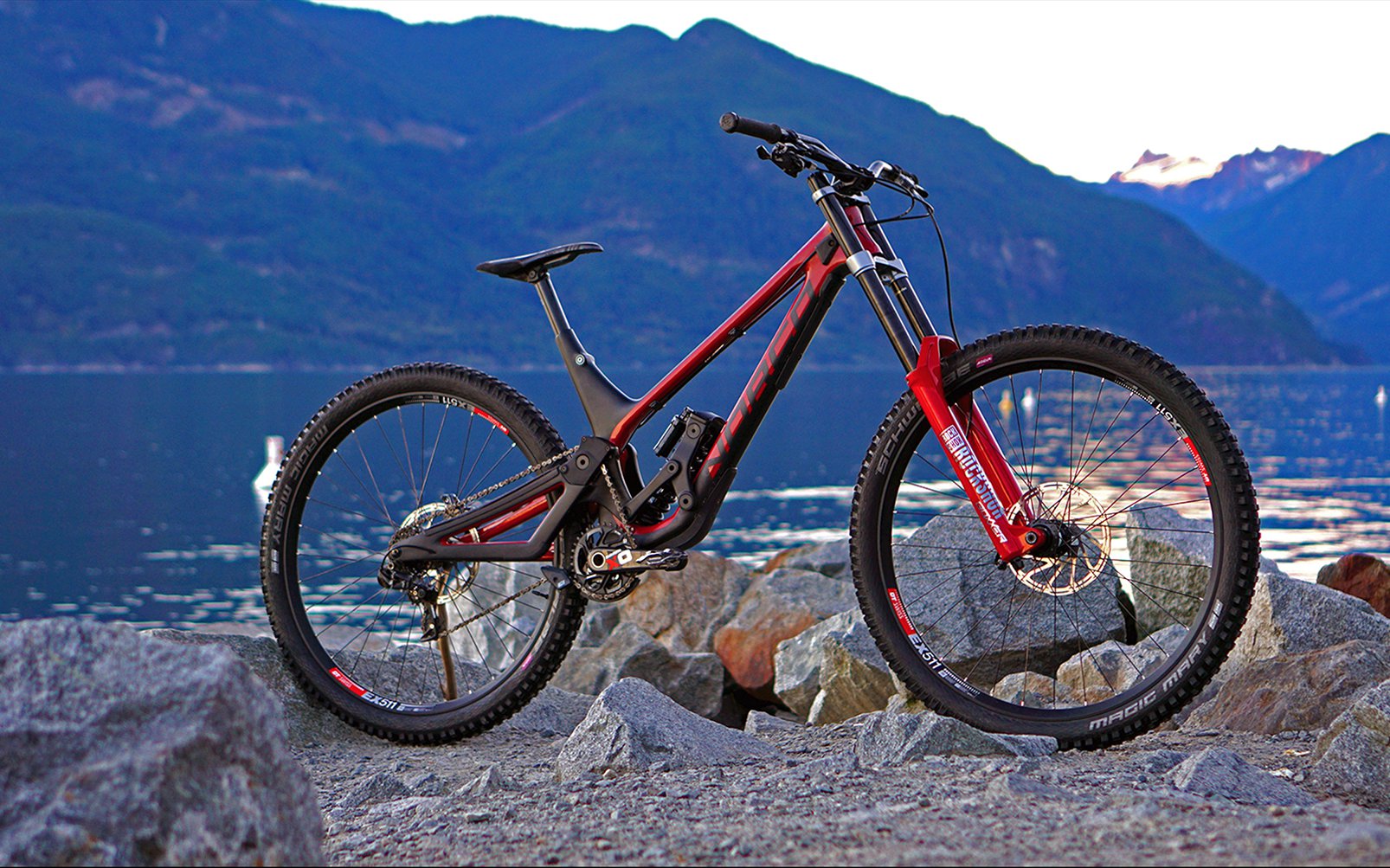
Product Review
2019 RockShox BoXXer World Cup (29) Reviewed
Earlier this year RockShox launched a new BoXXer for the 2019 model year. This is the biggest overhaul of the BoXXer in recent memory. While the 35 mm stanchions remain, just about everything else is new. With big shoes to fill, I was curious to see how the new BoXXer would stack up.
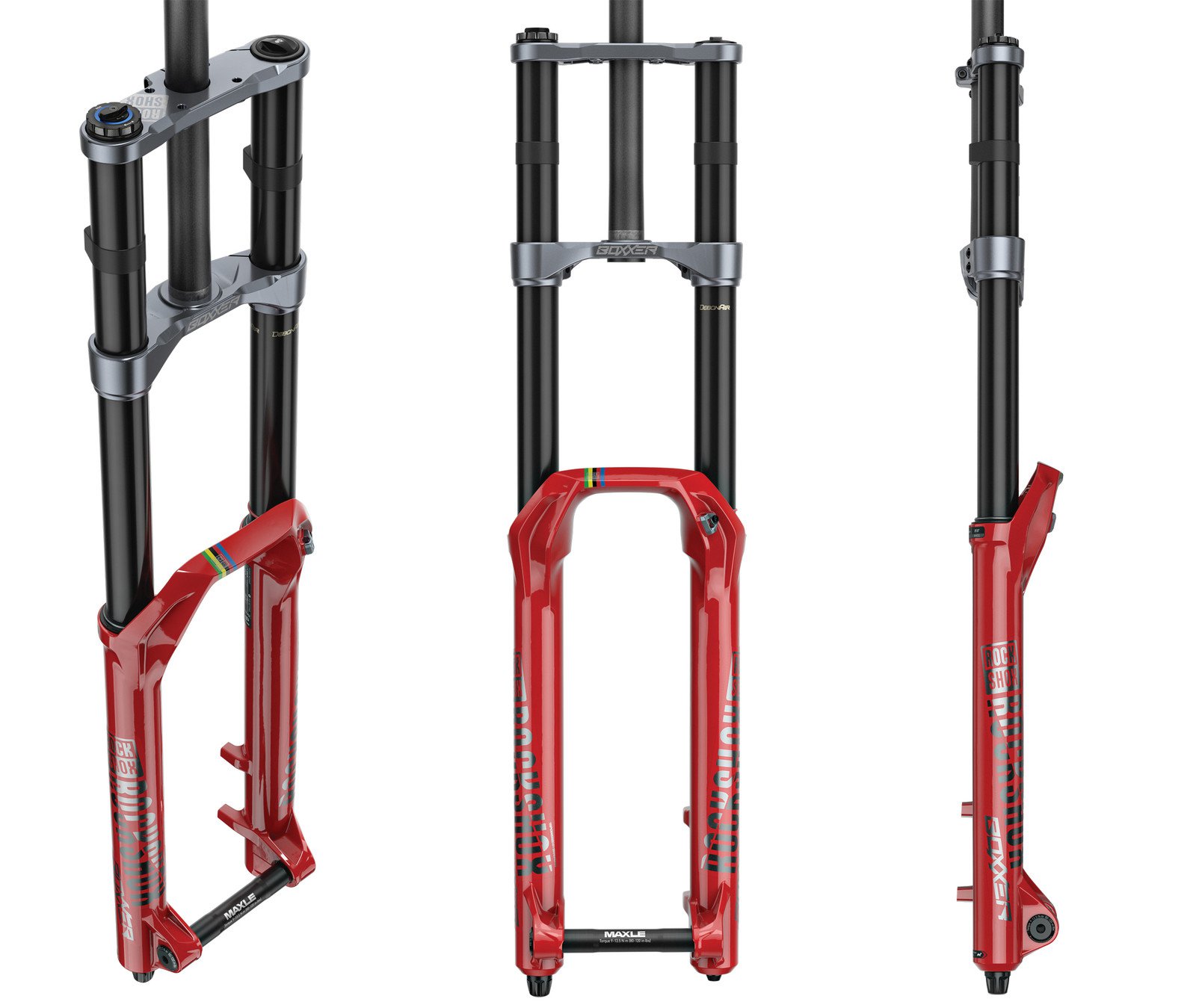
Available in red and black, but really why would you want anything other than the red?
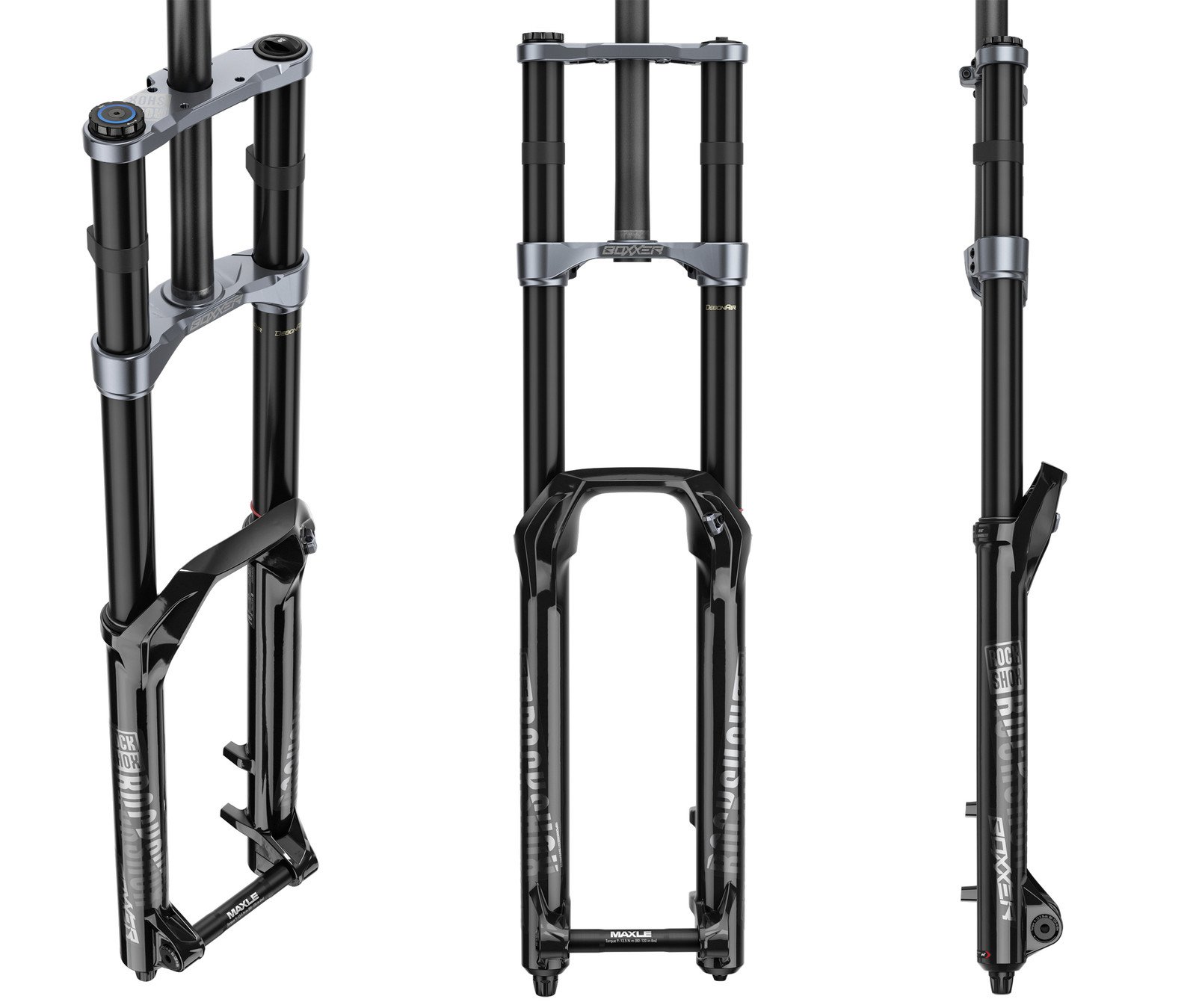
Black is available... but it's not red enough for me.
It seems the coming wave of 29er DH bikes was a good catalyst for product development. The MY2019 BoXXer comes in both 27.5" and 29" wheel variants. However the new BoXXer isn't just last year's fork with some longer lowers. The MY2019 is new from the ground up.
Features:
- Travel: 200 mm
- Wheel diameters: 27.5" and 29"
- New Charger™ 2 RC2 damper with independent high and low-speed compression adjustment
- External Adjustments: begin stroke rebound, low-speed compression and high-speed compression
- New DH-specific, friction-reducing DebonAir™ air spring
- Steerer options: 1 1/8” Aluminum
- Stanchions: 35mm diameter in Fast Black finish
- Offsets: 48 mm for 27.5" and 56 mm for 29" wheels
- New graphics with a BoXXer Red fork color options, also available in Black
- Weight: 2,565 g (5.65 lbs) for 27.5" and 2,615 g (5.76 lbs) for 29" wheels
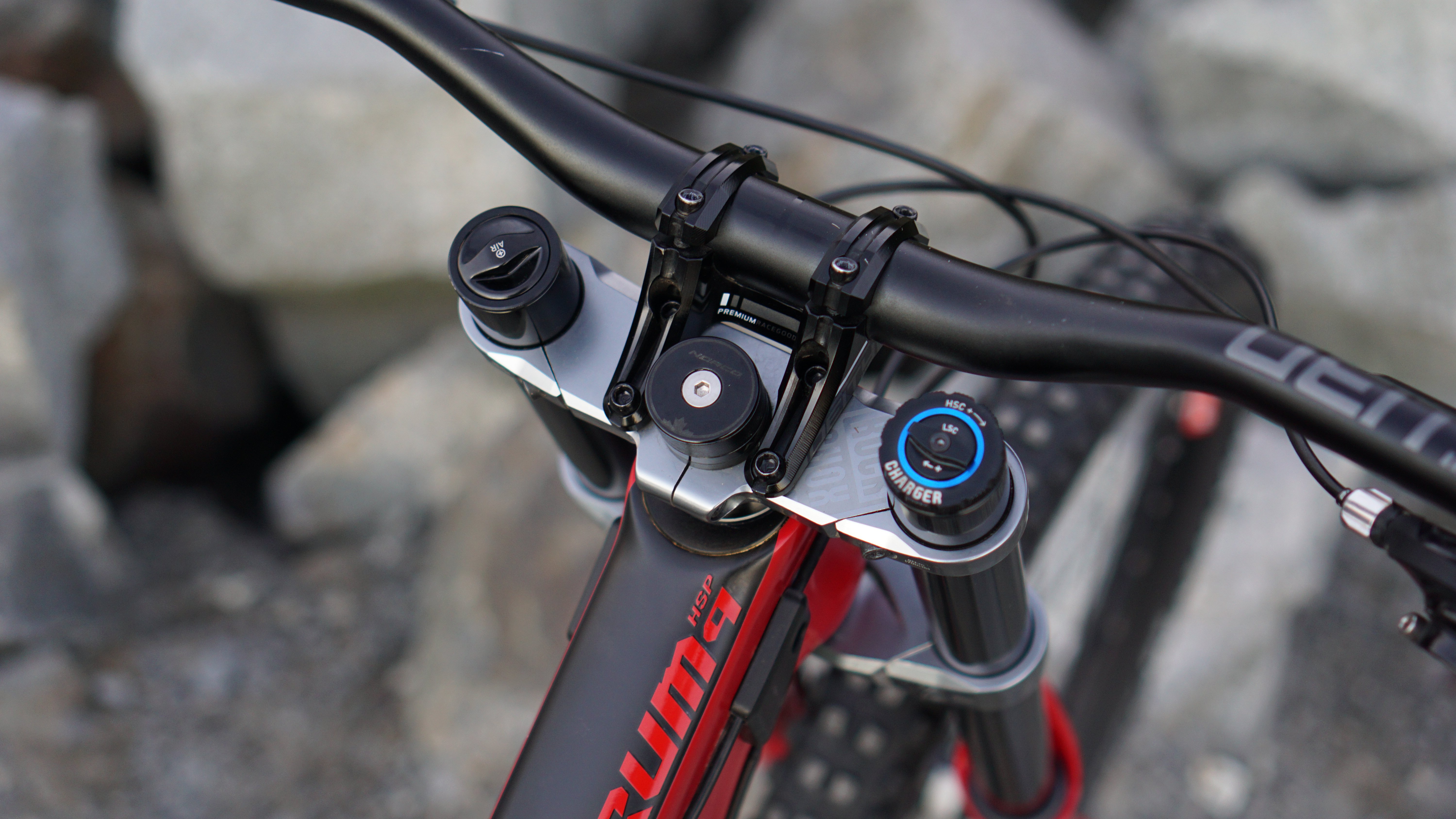
New flat crown lowers handlebar height, compensating for taller wheel and tire combinations. Air valve for the air spring in the left leg. External high speed and low speed adjusters in the right leg.
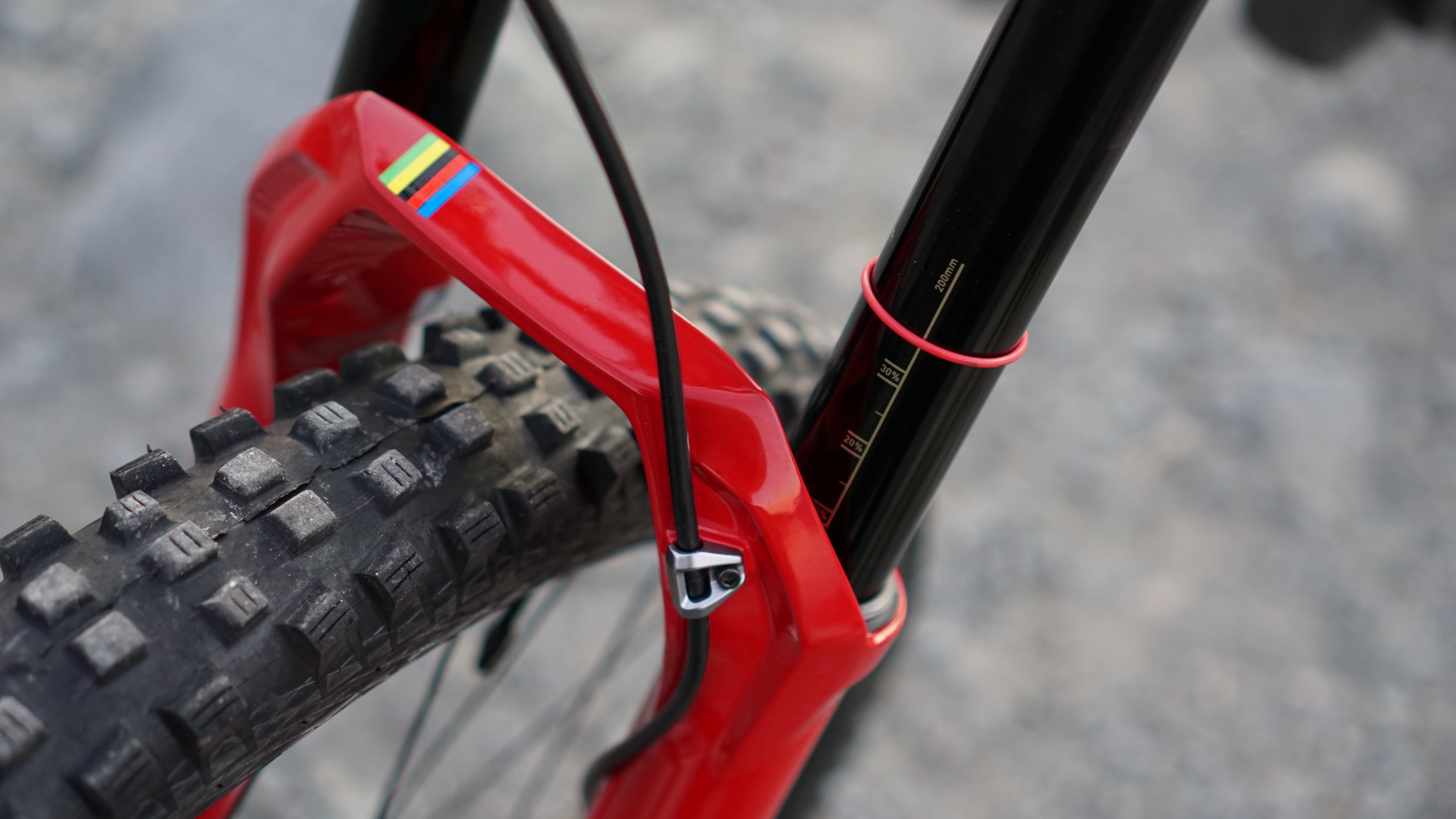
I prefer the more durable metal brake line retainer on the new BoXXer over the plastic fitting you see on most other forks.
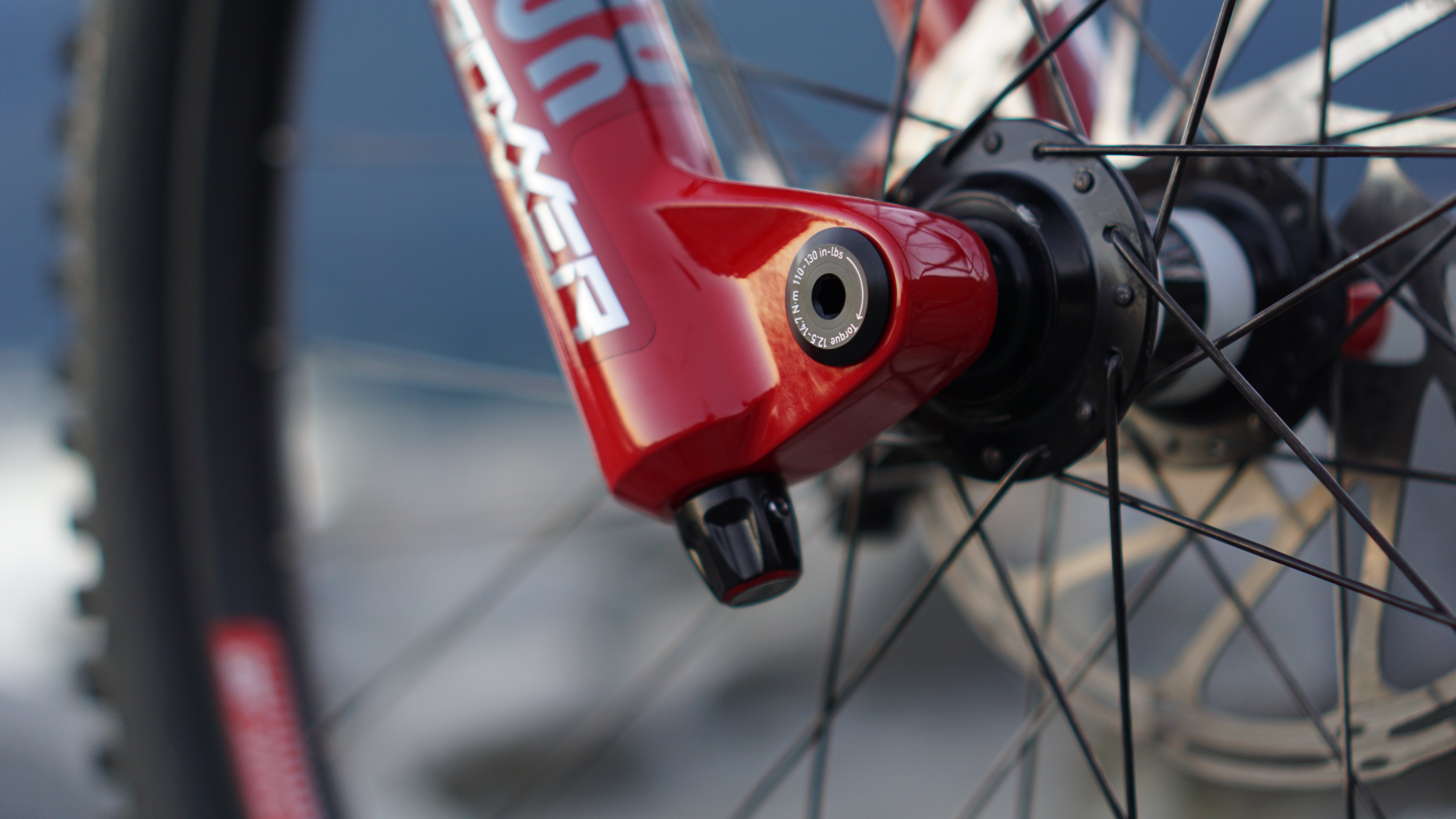
The rebound knob is in the standard location; on the bottom of the right leg. The bolt on axle was stiff and easy to easy.
My first experience with the new BoXXer came during opening week-end at the Whistler Bike Park this year. I was lucky enough to ride the MY2019 BoXXer for two days bolted to a brand new Intense M29. It didn't take me much time to get the new BoXXer dialed in to my liking, and I felt confident in the front end of the bike almost instantly. I asked a lot of technical questions over those two days, and the one recurring theme the folks at RockShox kept referencing was friction. Excess friction leads to poor bump compliance, and a fork that doesn't react to the ground as quickly and effectively. Many of the changes were aimed at reducing the static and dynamic sliding friction in the fork.
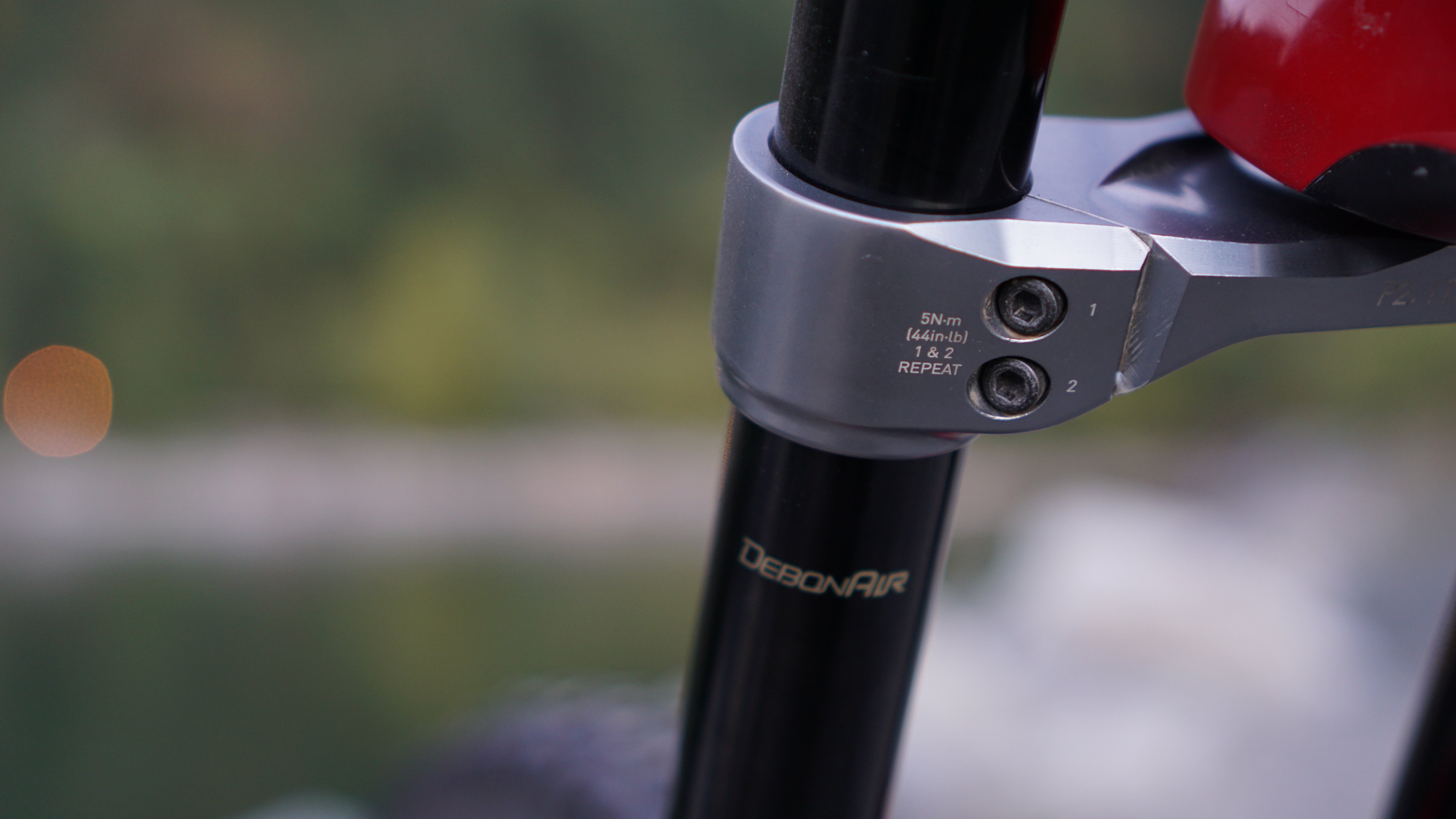
Attention to detail that makes me weak at the knees. Torque markings on all fasteners, and even the correct order for tightening the crowns.
After two days in the Whistler Bike Park my settings were sorted; 2 volume tokens, 150 psi air pressure, LSC 14 clicks out, HSC 3 clicks out, rebound 8 clicks out. In the bike park the new BoXXer's small bump compliance was excellent, the fork offered great support under braking, and ramped up nicely to control big impacts. All the while the BoXXer seemed to manufacture oodles of traction. Even when leaned over at generous angles the fork seemed composed, consistent and settled. Whether hard on the brakes, slow, or fast, the BoXXer always seemed to respond in a consistent and predictable manner.
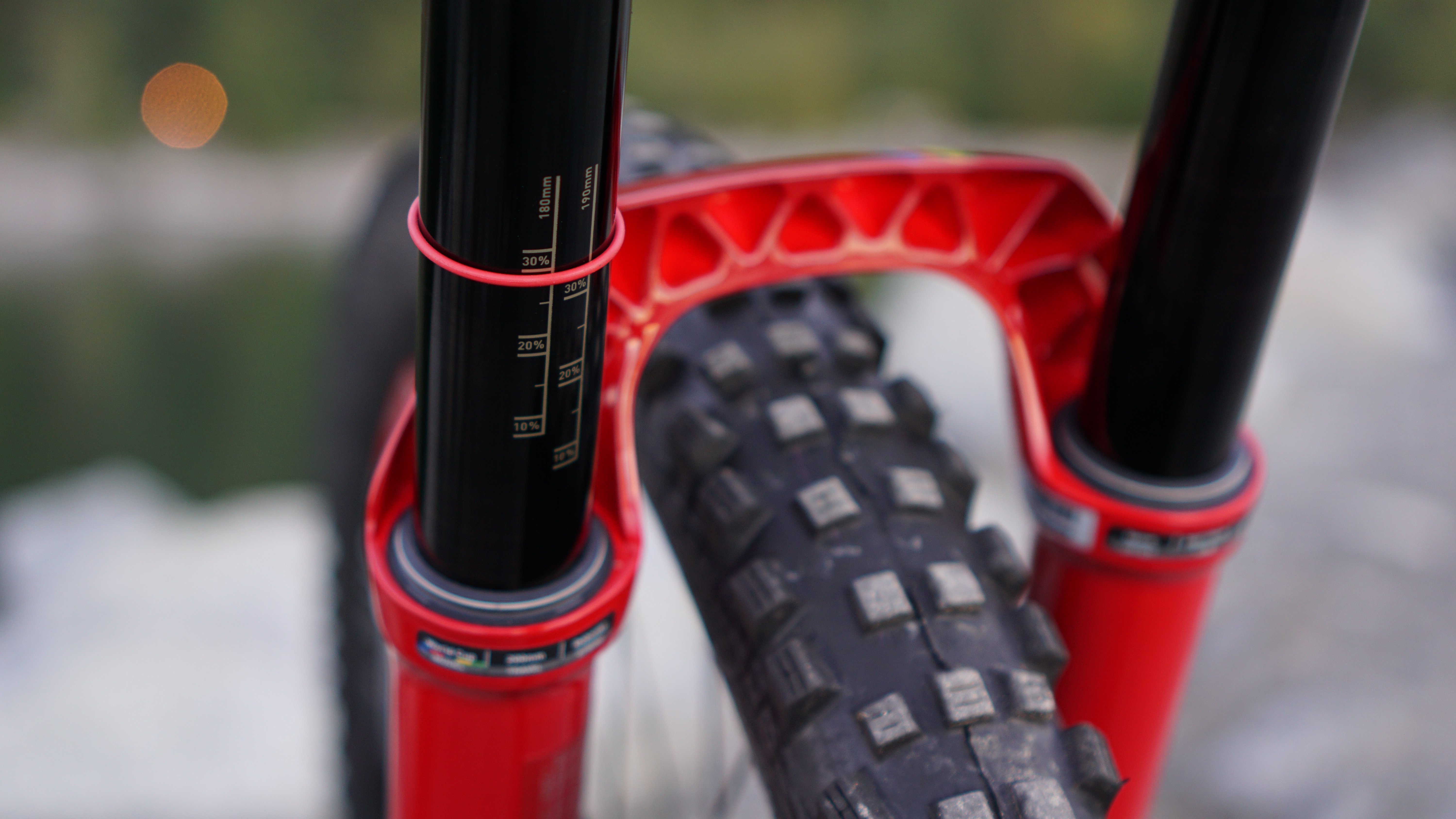
Three different travel versions are available, with sag-o-meter markings for all three on the stanctions
A few months later RockShox sent me a MY2019 BoXXer tester which I bolted to a new Norco Aurum HSP 29er. Not a shabby combo.
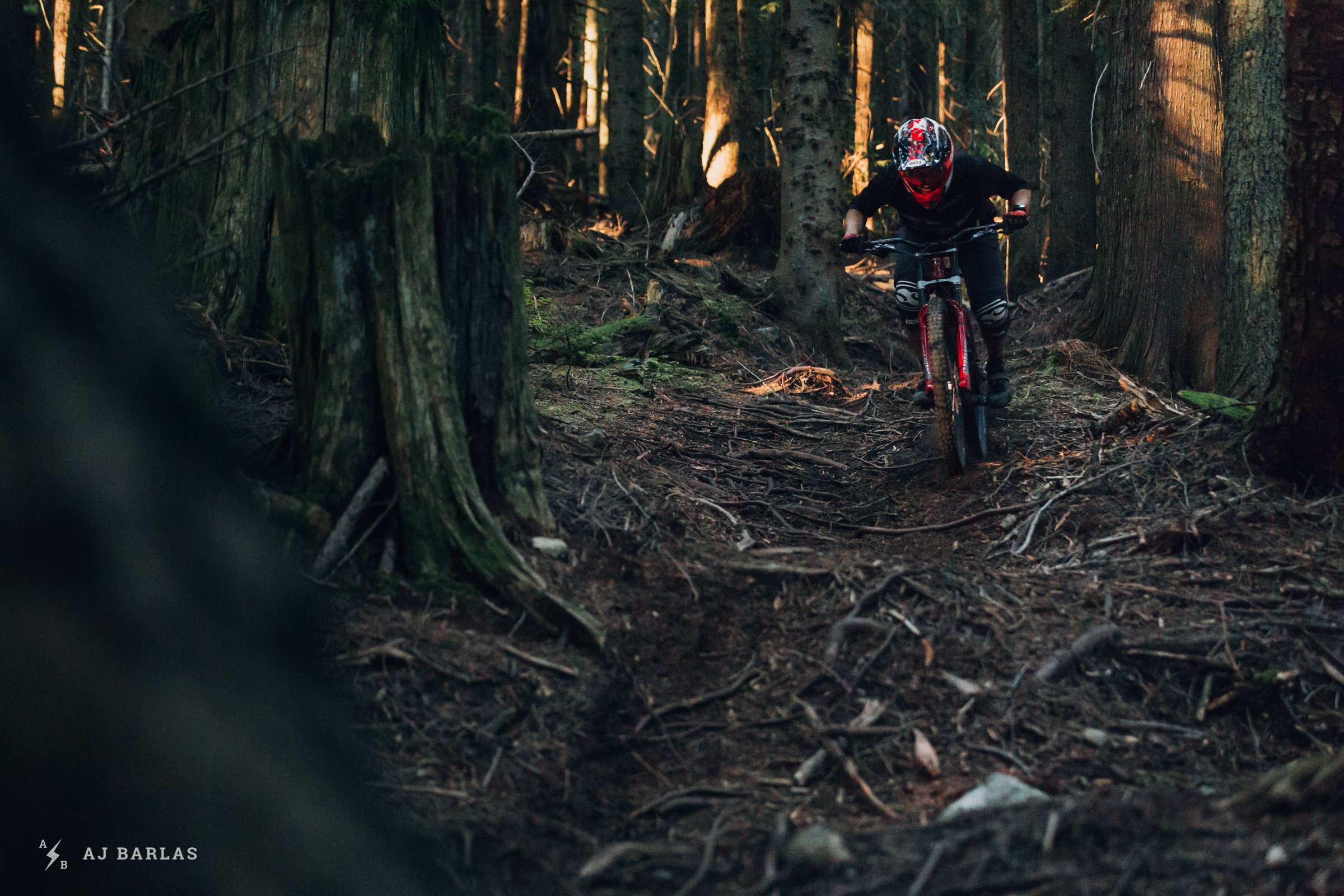
I love trails with a lot of texture and character, and in these environments the BoXXer excels
The first thing that struck me from the second test was how good the BoXXer was out of the box. I set the fork to the settings I previously enjoyed, and there was virtually no break-in period. The fork felt very similar to the one I'd ridden on opening week-end months ago. I thought maybe RockShox had done some special tinkering and tuned up the media forks, but I rode a third BoXXer that came stock on the Aurum HSP, and there was no difference. I'm impressed with the quality control, consistency of adjustments, and consistency of performance across the three MY2019 BoXXers I've ridden.
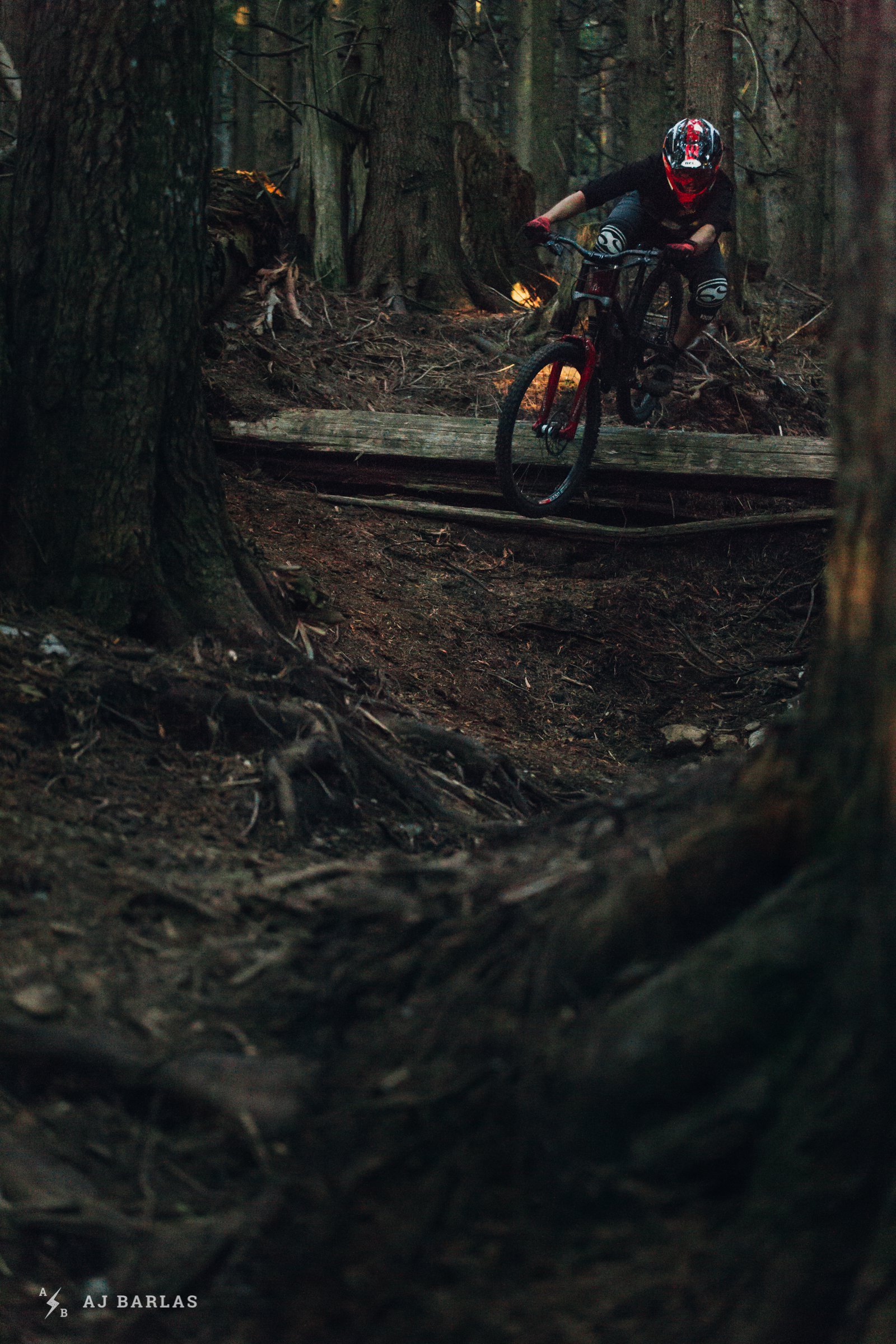
Even when the trail gets a bit hairy, the BoXXer was smooth and controlled
Let's Get Technical
This is the technical nerd section. I've never loved air sprung DH forks before because I've always felt they were firm off the top, soft in the mid stroke, and rampy at the end. I've always found coil sprung forks more consistent in their rate and, with fewer seals, they have less stiction. The new BoXXer is getting awfully close to coil spring good. This is achieved by tuning the positive and negative chamber volumes to achieve the spring curves below, which are close to the older coil sprung fork. I found I liked 2 tokens in the fork from back to back testing in the bike park and low and behold, that's the setup that most closely mimics a coil sprung fork. The air spring seals are one place were friction is said to be reduced, further closing the coil/air gap. The air piston is now aluminum with tighter machining tolerances, in order to improve fit and again reduce friction. See the plot below for the comparison of various BoXXer spring curves.
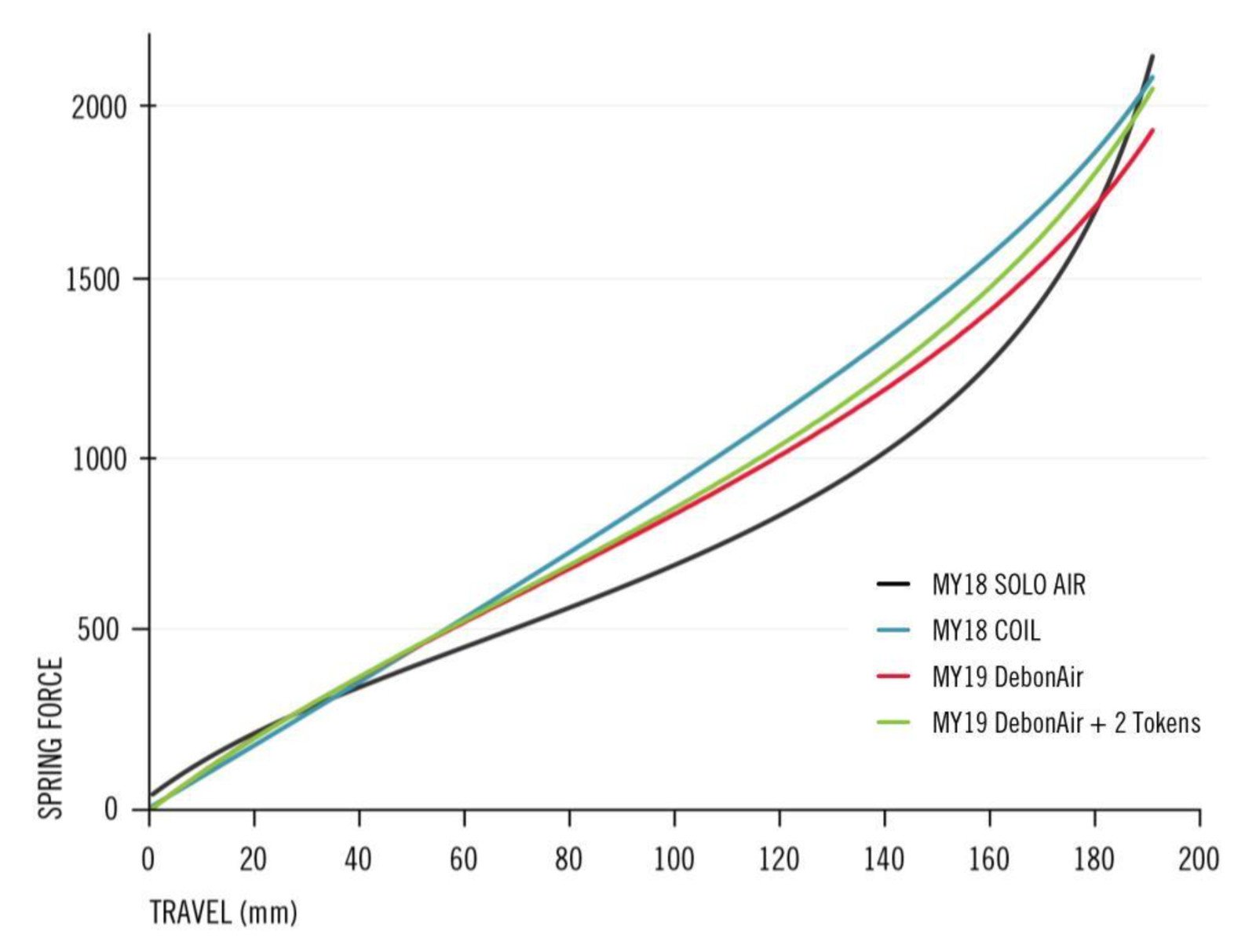
BoXXer spring force curves vs position
On the damper side the new Charger 2 damper offers high and low speed compression. The overall damper feel is similar to the older Charger damper, and that is a good thing. The original Charger damper is an excellent design. The high speed compression adjustment is a welcome addition. I was using 1 out of 4 clicks on the High Speed Compression (HSC) circuit. Each click made a noticeable difference in the damper performance. I was concerned that some lighter riders might find this HSC tuning a bit aggressive, but RockShox was convinced this setup worked for the widest array of people. That said I've always liked fairly open high speed circuits.
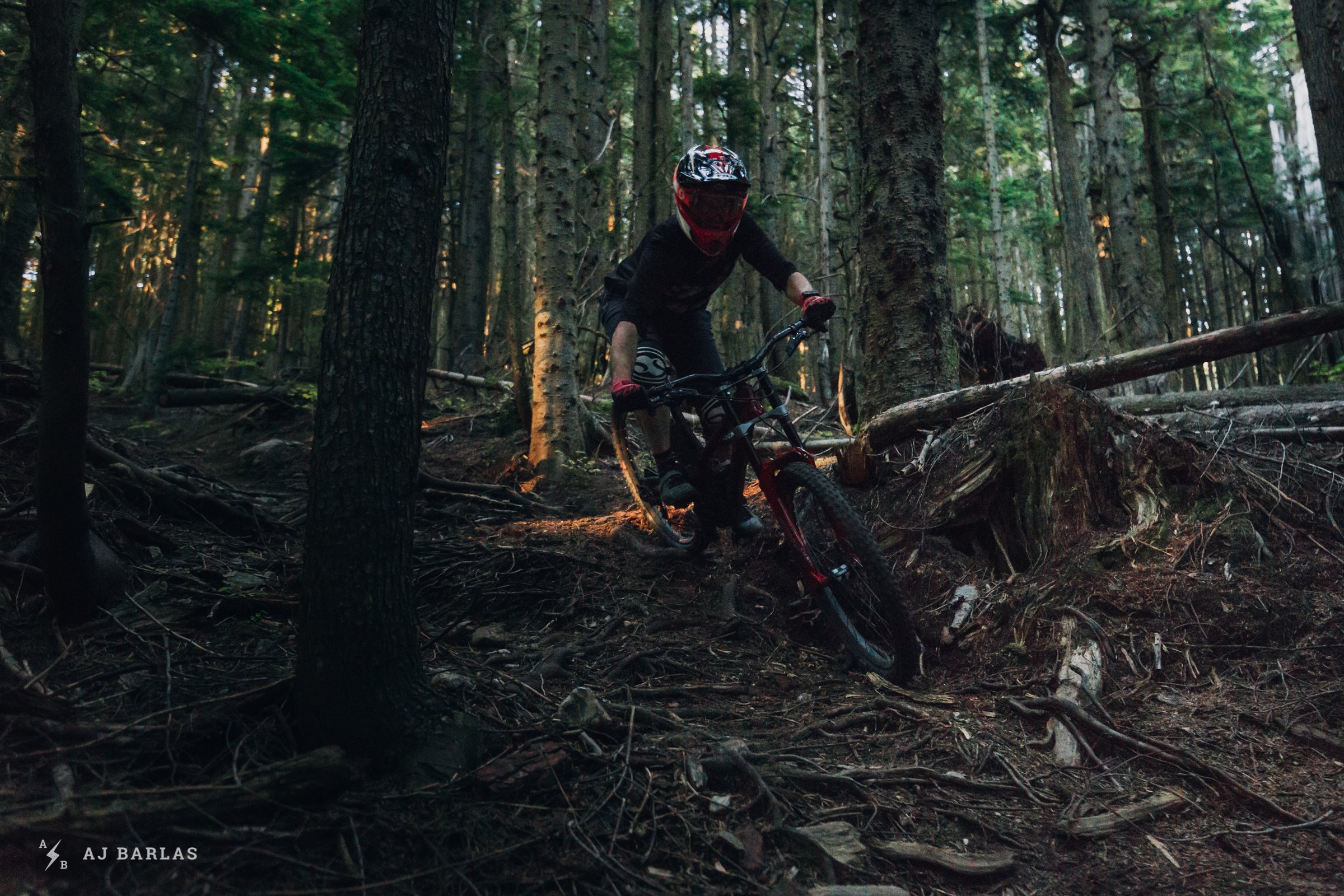
Traction monster
I'm not going to say this has been a long term review. I've had the fork for a couple months now, and it's seen a decent amount of riding in the Whistler Bike Park and on trails near Vancouver. What I can say is that it's seen some horrific conditions. Pouring rain, covered in mud, snow falling, frozen hands, yet the BoXXer still functioned flawlessly. So while I might not be able to comment on how it'll perform after a season of abuse, I can say again that I'm impressed with the consistency of the BoXXer. Even in cold and wet conditions the performance was excellent.
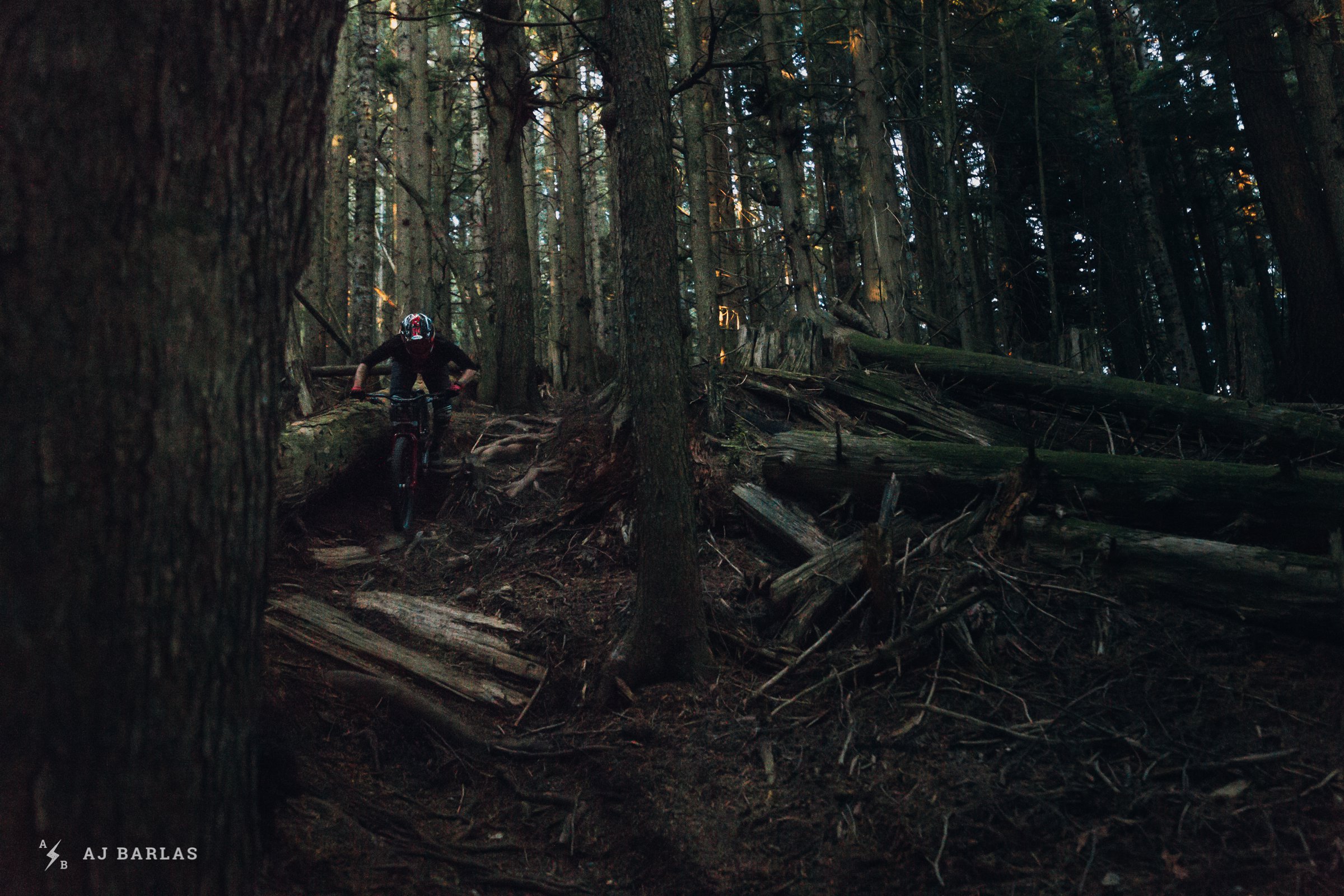
The steeper and rougher trails here require a firm fork, but that can still make good traction on the roots. No issues from the BoXXer.
I think with this being a 29er fork I'd be doing us all a disservice if I didn't briefly comment on 29er DH Bikes. I haven't been wild about 29er trail bikes to date. Given my previous experiences I'd expected 29er DH bikes to be long, boring and difficult to turn. Go straight, monster truck, machines if you will, which just isn't my style. I ride bikes to have fun, and I like bouncing around all over the place.
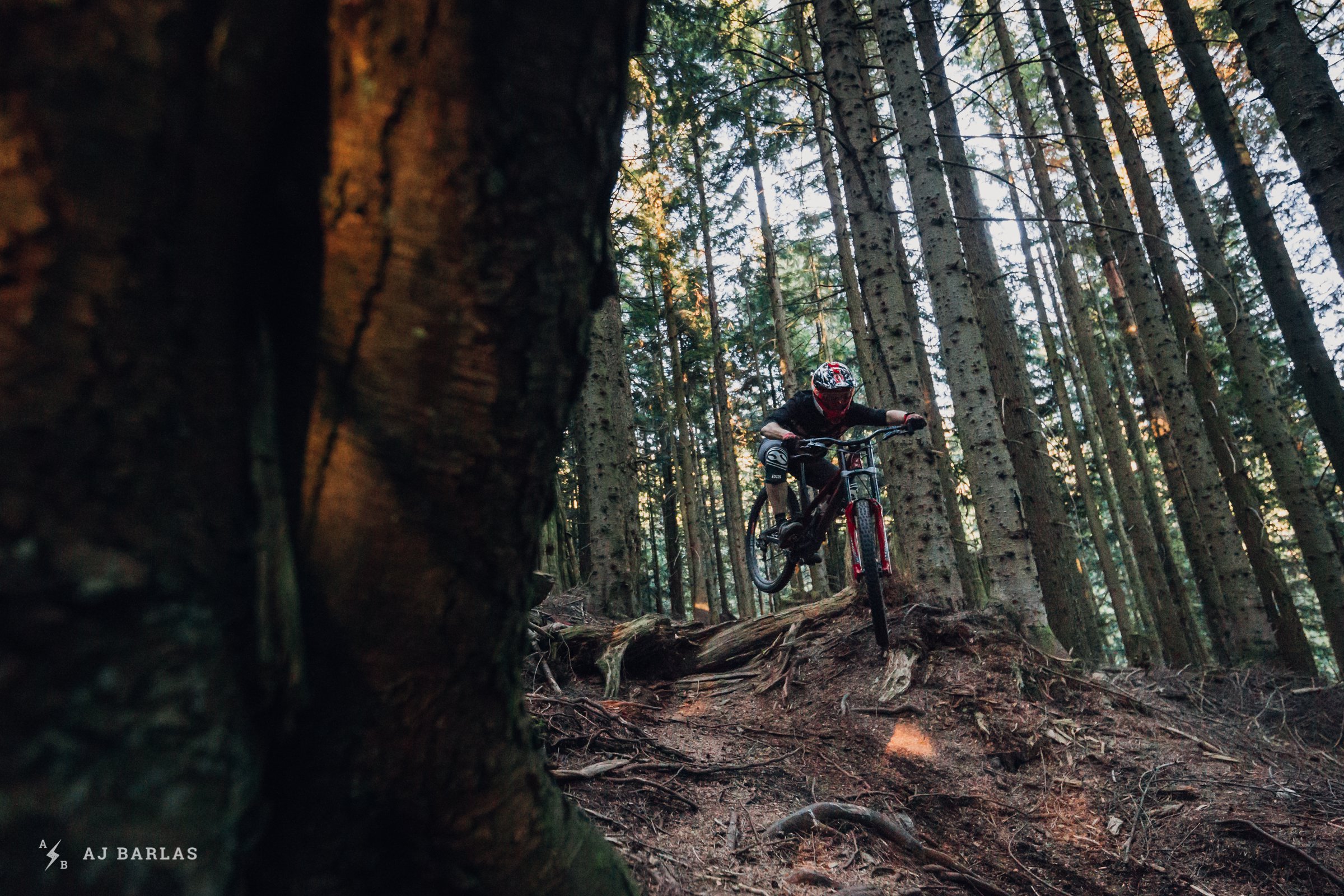
I never thought I'd have this much fun on a 29er DH bike; sniper transfer jump move with a nose bonk over a stump in to a right hand corner ... no problem.
Aaaannnd all those preconceived notions of mine were flat wrong. I'll have the whole humble pie please. First on the Intense M29 I was blown away by how nimble and fast the bike was everywhere. On my first run I was sliding in to turns, scrubbing jumps, and tossing whips. The traction was impressive, and the bike rolled fast. There seemed to be almost no downside. The Aurum HSP is a completely different beast, the bump adsorption of the back end is something of witch craft, yet the bike remains easy to ride fast, produces gobs of traction, and is just as easy and nimble through the tight stuff as any 27.5 bike I've ridden recently.

In Conclusion...
So conclusions then. Two thumbs up. On the 29er front, the 29er DH bikes are way more fun than I expected. The big wheels make big traction, and the BoXXer has proved to be a big part of that. The new air spring (insert cliche comment here) is really close to the feel of a coil spring... No for real this time! Friction has been demonized by RockShox and their efforts to rid the BoXXer of evil have resulted in excellent bump compliance and suspension response. The new Charger 2 damper builds on the already great Charger damper with the addition of an external high speed compression adjustment. The Charger 2 provided consistent damping, good low speed compression to keep the fork tall under braking, but a nice open high speed circuit that helped eat small bump. The BoXXer World Cup isn't cheap at $1699 USD, but there is the cheaper RC version that comes with the Charger damper for $1309 USD. Ultimately I feel like the new 2019 BoXXer is a step change improvement in performance, but it's come from countless small improvements. Evolution instead of revolution, and I think it's worked brilliantly.







Comments
Dave Smith
5 years, 2 months ago
knees...
Reply
Tim Coleman
5 years, 2 months ago
... are on fire!
Reply
Cooper Quinn
5 years, 2 months ago
IF YOU KEEP THEM CLOSE TOGETHER THEY RUB AND GET CHAFFED, DAVE.
Reply
Metacomet
5 years, 2 months ago
Hey AJ, couple of questions for you on the 29er DH bikes, and the Aurum HSP in particular I'm hoping you can help me out with (Please!).
Are you getting any real significant rub from the rear tire on really steep terrain, big rollers, g outs, slow drops with heavy rear weight bias/thrust, or other situations? I had a longer travel 29er for a couple of years and though I loved the bike in a lot of situations and found it to be quite fast, I never liked the rub that came with the big wheel in those types of scenarios. For a non-racing focused DH bike, do you think its worth that tire burn? Are you noticing it at all on the DH bike? Do you notice it on 29" trail/enduro bikes? How tall are you and what inseam length/body type? I'm pretty much right at 6' tall with a 32" inseam.
On the Aurum HSP, I'm torn between going for the M/L or the L/XL as I fall right between the two in their setup guide, and it is further complicated by the choice between 27.5 or 29. I've been quite decided on 27.5 for some time, but the points you make have me intrigued if the 29" version would be totally fine, without as much negative as I'm imagining from past experiences. I think i'd be perfectly happy and fine on the 27.5, but I don't want to write anything off without giving it a fair consideration and hearing from others.
I love the reach adjust headset cups on the HSP. Do you think it would be better/more versatile to stay on the longer side, or would the M/L feel fine on a DH bike where both outright speed and fun/playfulness are important?
Reply
Garrett Thibault
5 years, 2 months ago
Rub in the second paragraph is referring to tire contact with your butt/crotch right?
I have this issue with 27.5 DH bike’s and asked Tim if he had the issue on the 29” Intense on his Instagram. He hadn’t. I’m curious if he’s experienced it with more time on the big wheel DH bike.
I’m guessing riders that are clipped-in are less likely to be as low and far back over the tire though.
Reply
Metacomet
5 years, 2 months ago
Yeah exactly. I wonder if less tire rub is a byproduct of increased reach and slacker angles found on the newest generations of bikes? Is that possible? Logic being that you are more centered between the wheels, and also have a much longer front center. Meaning you do not need to move as far back on extra steep terrain with so much bike in front of your BB. Extra reach encourages you to stay more forward and centered, whereas you would have historically found yourself hanging straight off the back to get far enough behind the front axle, that you were directly above if not behind the rear axle as well. If so, is that adjustment enough to avoid tire rub on the wagon wheels?
Reply
Tim Coleman
5 years, 2 months ago
This is an interesting topic. I'm 6' tall and have shorter than normal legs for my height with a 32 inseam, and tend to ride in a squat knees out / elbows out position. I found riding 29er trail bikes on steeper terrain resulted in some terrifying butt buzz situations. I've since had a ton of time on the Intense M29 and the Aurum HSP 29er with no butt buzz issues. However I haven't ridden a ton of super steep trails on the Aurum or Intense, most of my riding was in the Whistler Bike Park on those bikes. I think your point about the slacker head angle and longer front center does a lot to mitigate the butt buzz I was experiencing on the trail bikes. The rearward axle path on the Aurum probably also helps since the tire moves backwards almost as much as it moves vertically under compression.
As for the offset cups, it's a great reach adjustment on the Aurum HSP. I ran the bike in the longest setting and loved the geometry on the L/XL for my height. I'd recommend going with the bigger bike and running it in the shorter setting if you find it too long.
This probably doesn't help you at all, and its counter intuitive. But I just ordered and built up a 27.5 Norco Range trail bike for 2019 as my personal bike, having the choice of both tire sizes. And I'd buy the Aurum HSP 29er (although I haven't ridden the 27.5 variant ... but I REALLY enjoyed the HSP 29er).
Reply
Garrett Thibault
5 years, 2 months ago
Just more info: Paul Aston commented on this issue in his Cube 29” review too
“ I wouldn't want the wagon wheels for constant park laps – I've already had a couple of tire-to-ass connections and I'm a tall rider – shorter pilots might not be comfortable on steep-lipped jumps where you need to let the bike come up closer to your body towards the peak of airtime.”
https://m.pinkbike.com/news/cube-stereo-two15-29-review.html
Reply
Metacomet
5 years, 2 months ago
Awesome. Thanks for the feedback. I think the 27.5 in L/XL would be the ticket for what I'm looking for.
As sweet as I think the 29'er would be, I'm not sure if a slight rolling advantage would be worth giving up even a little confidence on the steepest and other most committing moments if the rear wheel was buzzing my ass every time.
grambo
5 years, 2 months ago
I saw Paul's comment over there. As a stubby legged 5'10" dude (30" inseam) I would like to try an HSP 29er but am not sure I would end up with one. I struggled with a couple 29er trail bikes for the same reason on the shore, but they were more traditional geo and not as long reach.
Please log in to leave a comment.